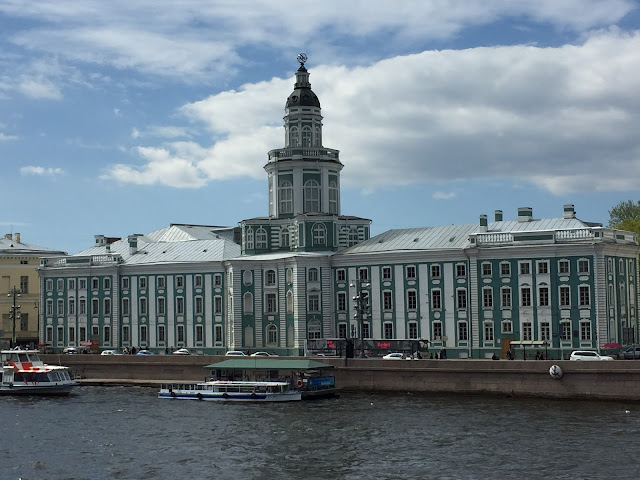17. Kunstkamera / Peter the Great Museum of Anthropology and Ethnography
The Kunstkamera was founded in the 1720s, which makes it the first museum in Russia and among the earlier examples worldwide. It was founded by Peter the Great, who apparently had a particular interest in deformed human and animal fetuses. His aim with the museum was to teach the public to better understand and not to fear "monsters".
Almost three centuries later, the museum (now known as the Peter the Great Museum of Anthropology and Ethnography) still has an entire gallery devoted to these displays, arranged in the old-fashioned "cabinet of curiosities" style. This room is truly the stuff of nightmares: jars full of conjoined twins as well as fetuses with two faces, three arms, no limbs, a single cyclopean eye, or missing a brain entirely, among a seemingly comprehensive range of other deformities - dozens and dozens of them.
I am fascinated by the Anatomical sciences, even worked for several years as an Osteologist in the late 1990s / early 2000s (basically, I studied human skeletal remains for a living), but this was creepy for sure. I like to jest about putting a homunculus jar on my mantel, but many of these were far too grotesque for home exhibition - they would certainly put you off your appetite at a dinner party. Consider yourself warned - don't linger on the pictures below if you're squeamish.
In other galleries, the museum included old-fashioned displays of costumes and material culture from throughout North America, Asia, and Africa. There were also exhibits covering the history of science in the 18th century. Some of the artifacts were spectacular, but the museum as a whole would benefit from some updating. Still, a fun visit.
Almost three centuries later, the museum (now known as the Peter the Great Museum of Anthropology and Ethnography) still has an entire gallery devoted to these displays, arranged in the old-fashioned "cabinet of curiosities" style. This room is truly the stuff of nightmares: jars full of conjoined twins as well as fetuses with two faces, three arms, no limbs, a single cyclopean eye, or missing a brain entirely, among a seemingly comprehensive range of other deformities - dozens and dozens of them.
I am fascinated by the Anatomical sciences, even worked for several years as an Osteologist in the late 1990s / early 2000s (basically, I studied human skeletal remains for a living), but this was creepy for sure. I like to jest about putting a homunculus jar on my mantel, but many of these were far too grotesque for home exhibition - they would certainly put you off your appetite at a dinner party. Consider yourself warned - don't linger on the pictures below if you're squeamish.
In other galleries, the museum included old-fashioned displays of costumes and material culture from throughout North America, Asia, and Africa. There were also exhibits covering the history of science in the 18th century. Some of the artifacts were spectacular, but the museum as a whole would benefit from some updating. Still, a fun visit.

















Comments
Post a Comment